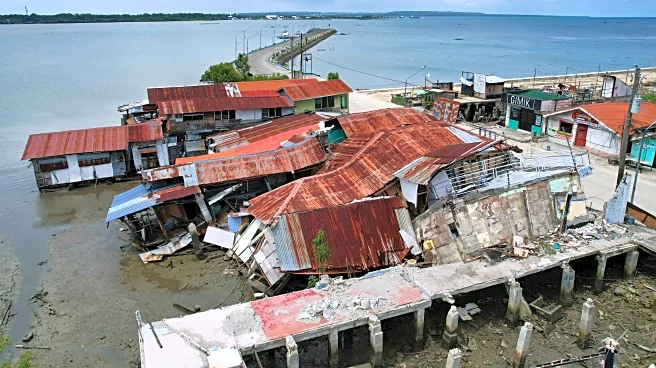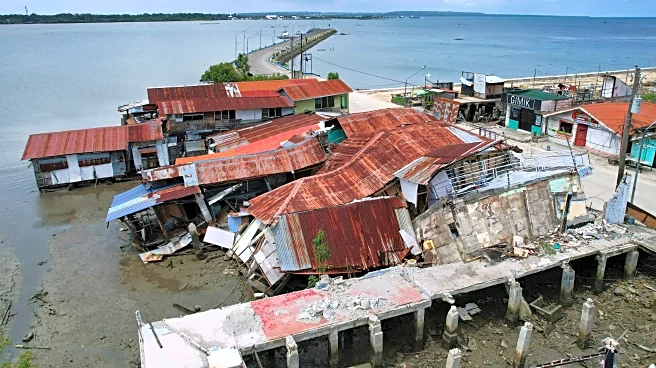What's Happening?
Typhoon Matmo has intensified and made landfall in southern China, leading to the evacuation of approximately 347,000 people from the provinces of Guangdong and Hainan. The storm, with maximum sustained winds of 94 mph, prompted China's National Meteorological Center to issue a red-level typhoon warning, the highest in its system. The typhoon struck Zhanjiang in Guangdong province mid-afternoon on October 5, 2025. In preparation, Hainan province canceled flights, shut down public transport, and closed businesses. The storm also affected Macau, where classes and tutoring sessions were canceled. Prior to reaching China, Typhoon Matmo passed through the Philippines, impacting over 220,000 people, though no casualties or major damage were reported.
Why It's Important?
The impact of Typhoon Matmo is significant as it disrupts daily life and economic activities in the affected regions. The evacuation of hundreds of thousands of people highlights the severity of the storm and the potential for widespread damage. The typhoon's path through major agricultural areas in the Philippines and its approach towards northern Vietnam and China's Yunnan province raises concerns about agricultural losses and further evacuations. The storm's timing during China's peak holiday season exacerbates its economic impact, affecting tourism and local businesses. The response to the typhoon underscores the importance of disaster preparedness and the challenges faced by governments in managing large-scale evacuations and ensuring public safety.
What's Next?
As Typhoon Matmo continues its path, it is expected to move westward and north towards northern Vietnam and China's Yunnan province. Authorities in these regions are likely to prepare for potential impacts, including further evacuations and disruptions. The focus will be on monitoring the storm's progression and implementing measures to mitigate damage. The aftermath in the affected areas will involve assessing the damage, providing aid to displaced individuals, and restoring normalcy. The response and recovery efforts will be crucial in minimizing the long-term impact on the affected communities and economies.












